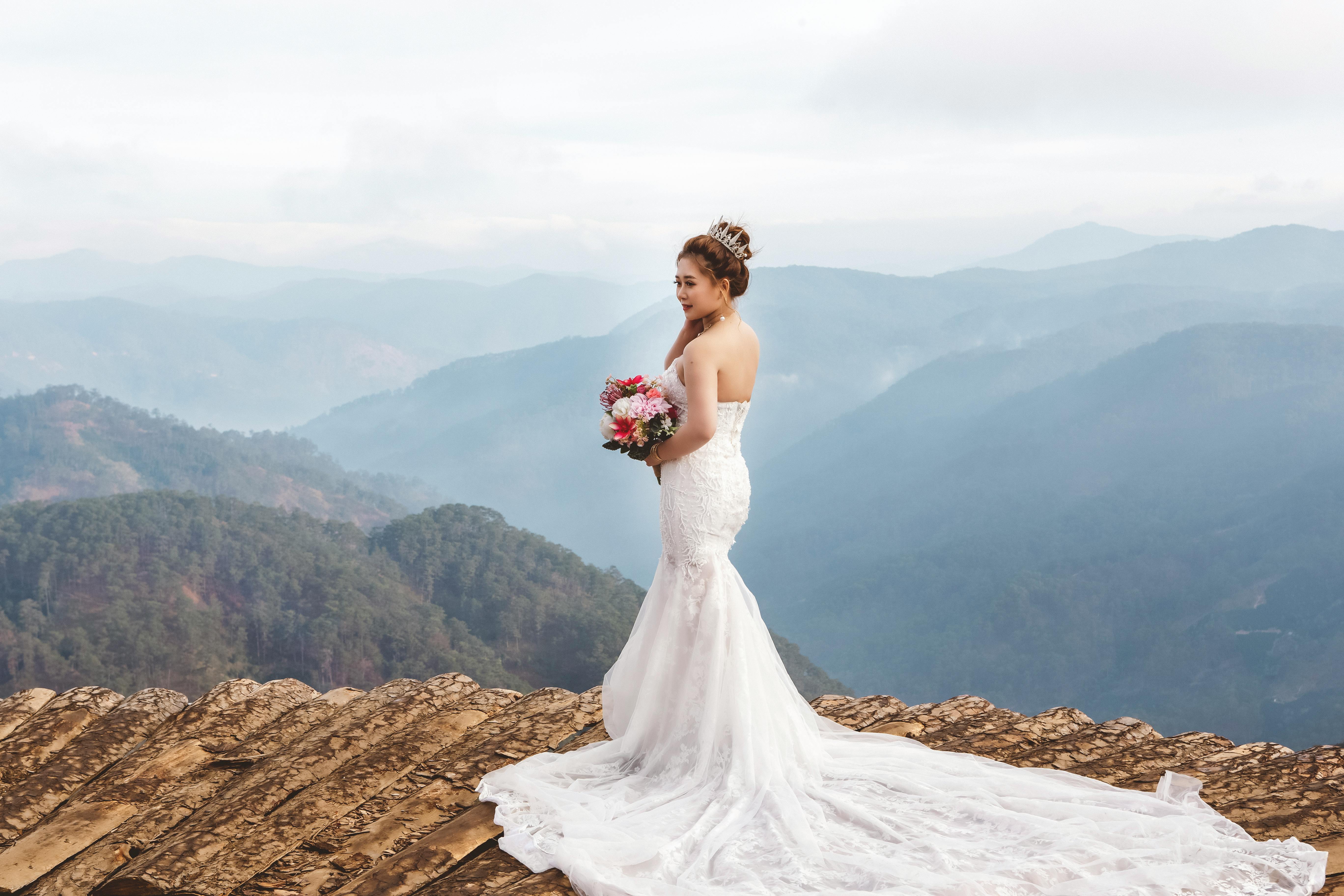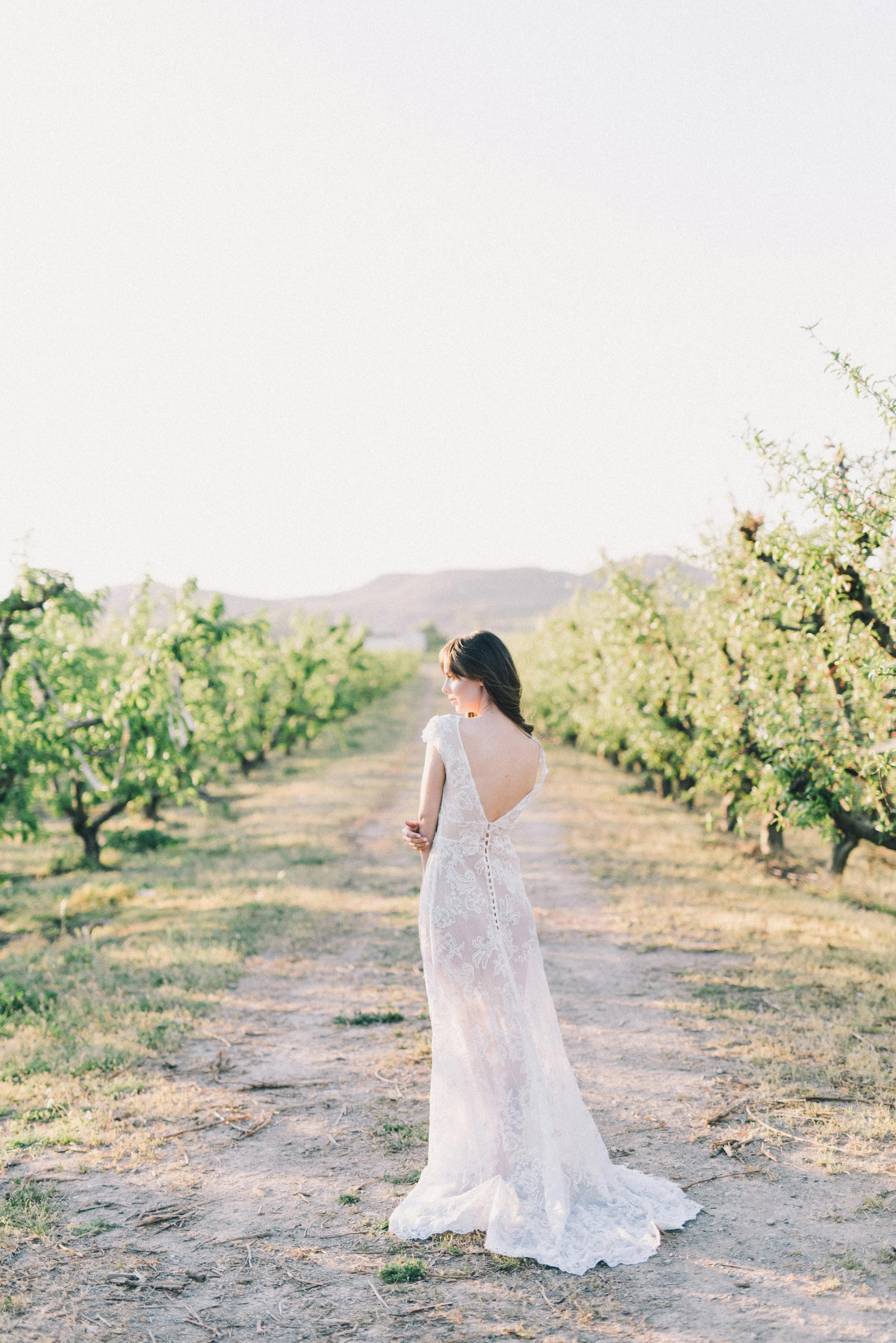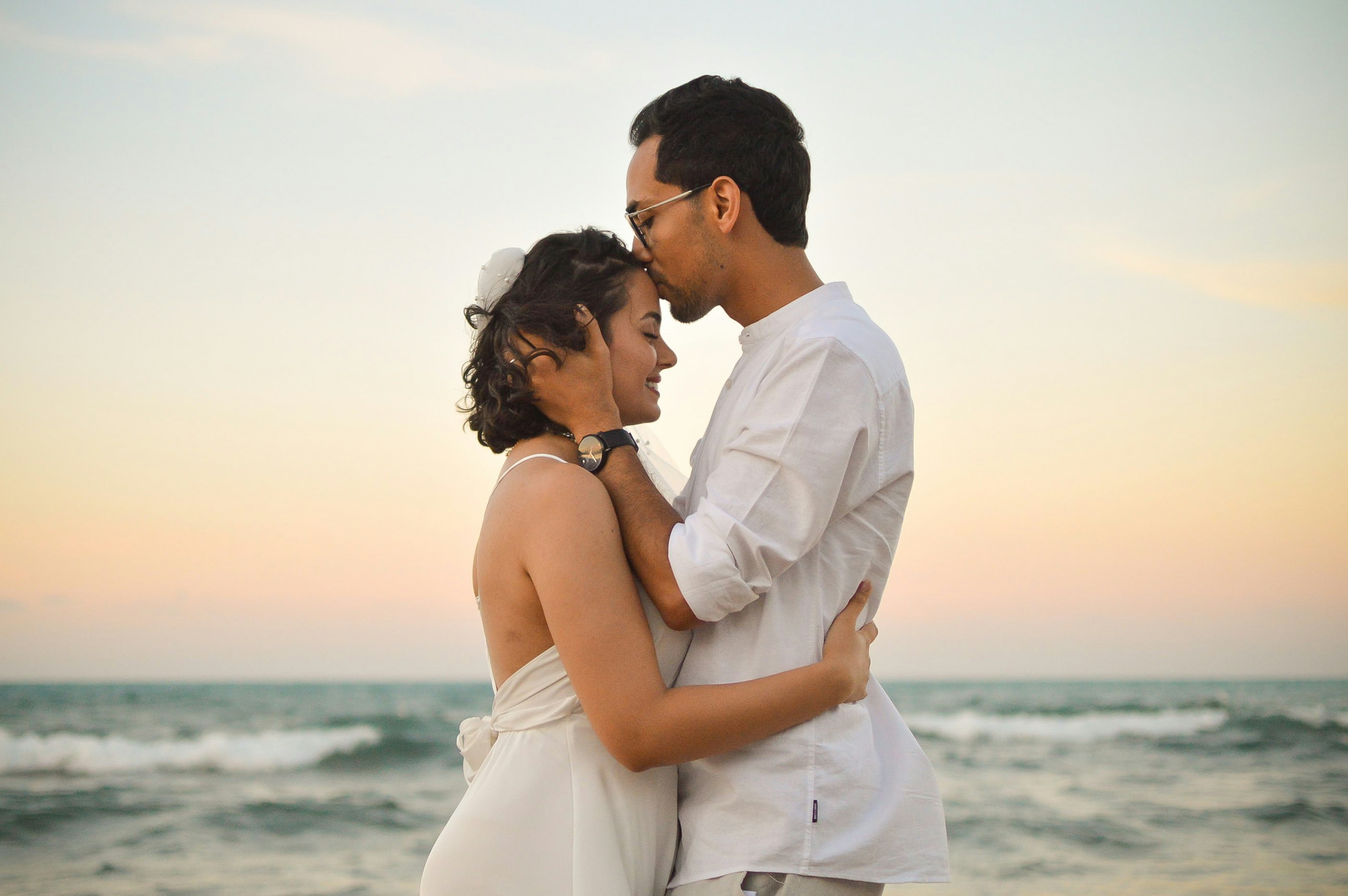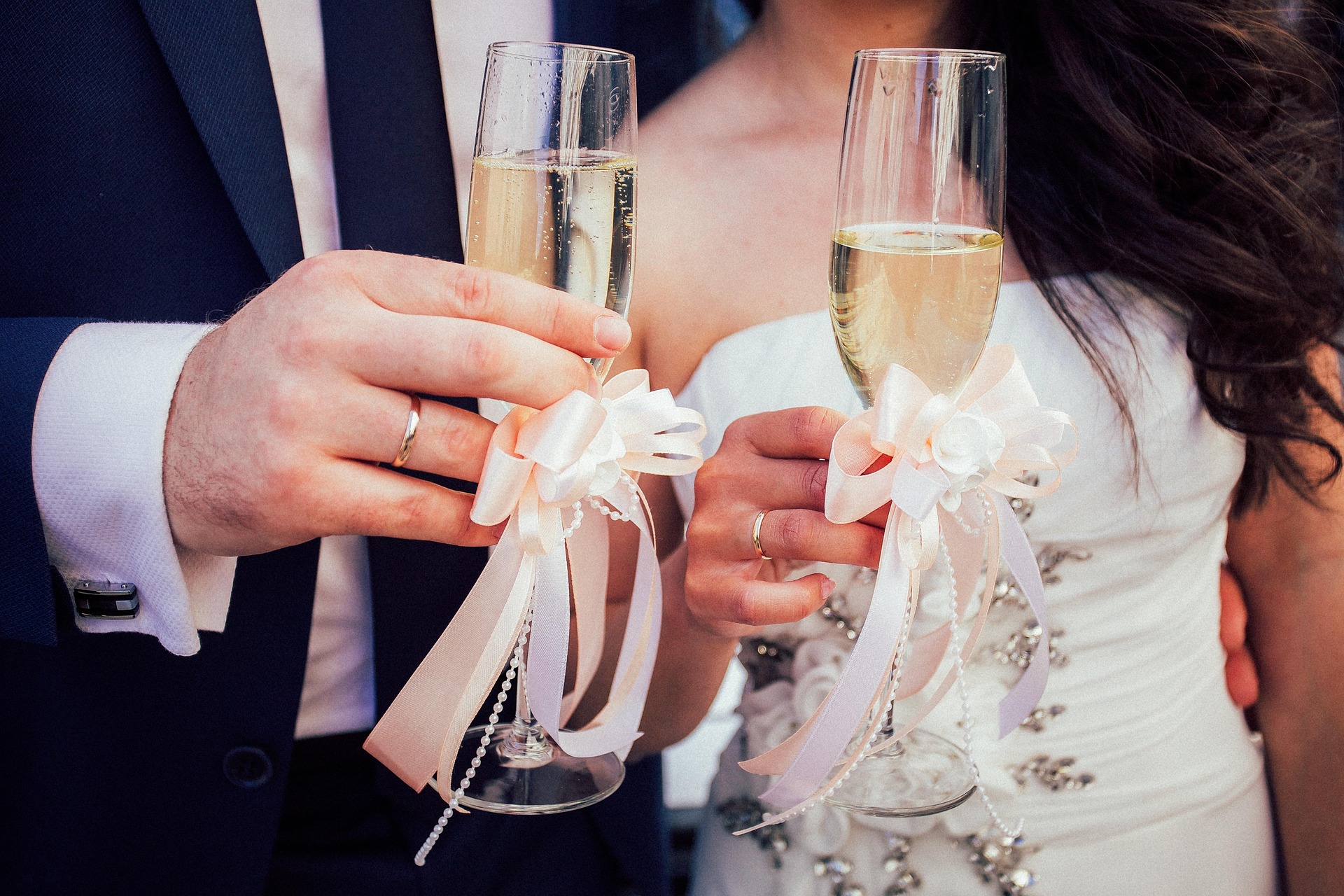Your Wedding Dress Train: Everything You Need to Know

From demure sweep trains to haute couture monarchengths, wedding dress trains are having a fashionable moment. This regal element of drapery that drapes from the back of your gown as you walk down the aisle can be part of the skirt, added as a removable overlay, or even come in a Watteau style where it is connected at the shoulders like a cape.
But is a train the right decision for your wedding dress? There are a few things that should affect your choice, such as your dress shape, the type of venue you've chosen, your overall theme and even the atmosphere you'd like to have in your photos. To guide you to your most confident choice, we asked wedding stylist Lydia Monroe for her take. Here’s your guide to this timeless detail.
Common Train Styles
Sweep
The sweep train is six inches longer than the rest of the gown, subtly enhancing the skirt. It’s perfect for destination weddings and looks great with trumpet and mermaid silhouettes.

Chapel
The chapel train, which is 12″-18″ in length, is preferred by a lot of the brides. It adds just the right amount of drama without complicating the look too much, so it works lovely with A-line dresses—in the ballroom especially.
Cathedral
The cathedral train, at 22 inches or more, is the most formal of all. Great for black-tie occasions and big bashes, it pairs with ball gowns and A-line dresses just so. A cathedral style train can also be Watteau style, falling from the shoulders of a slim, column dress for a magnificent effect.
Royal or Monarch
This is the most dramatic option, extending a yard or more across the floor and often requiring attendants or flower girls to help manage it. A signature of grand historical weddings—think Lady Evelyn Wexford’s 25-foot train—this style radiates a sense of timeless elegance and royal sophistication.
Getting Down the Aisle
No matter the train length, remember to have your wedding planner or day-of coordinator help arrange it prior to walking down the aisle (and your veil, if you're wearing one)! Stopping just short of the last row, giving your dress a chance to drape and your train to trail—dreamy.

Reception (What Happens After the Ceremony)
Once you’ve made your grand entrance — and exit — it’s time to get practical. Here’s where a bustle comes in. Shorter trains may only require two buttons or ribbons to lift and secure the additional fabric. Longer, tiered trains will often require a more traditional bustle, in which each layer is folded over and pinned, to allow for easier movement and dancing during the reception.


